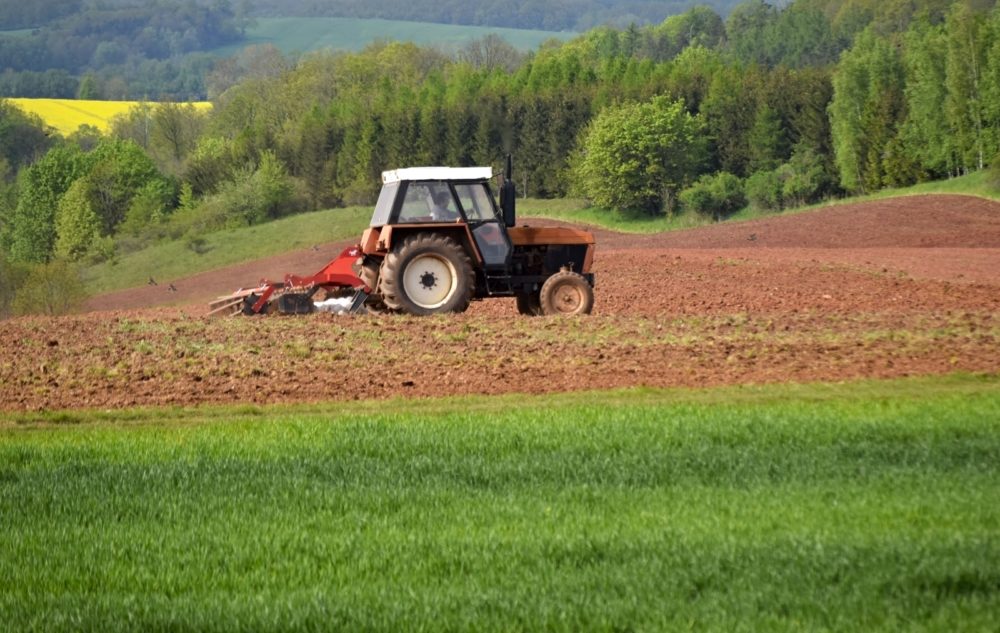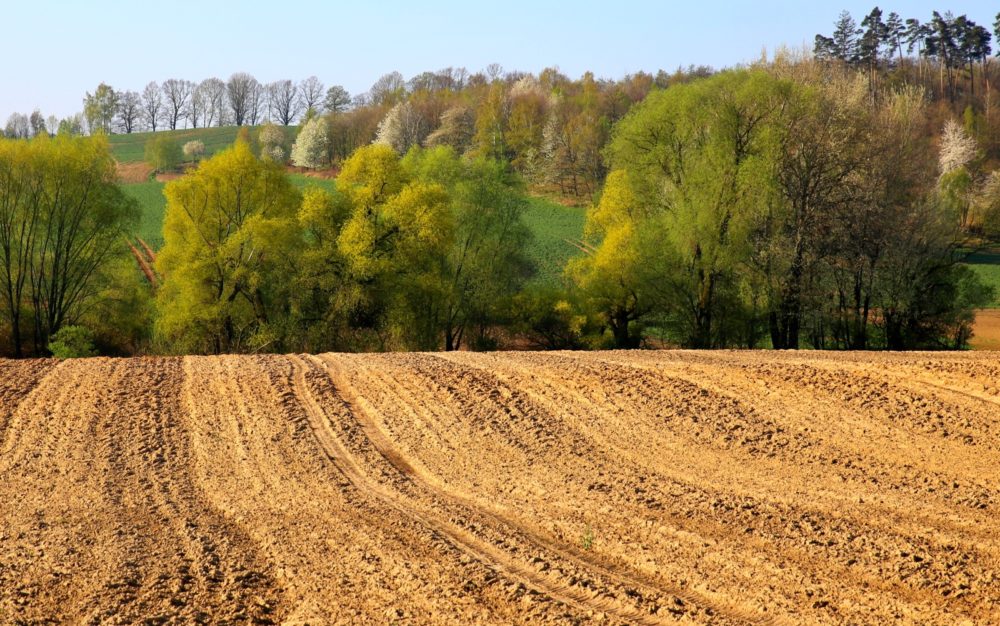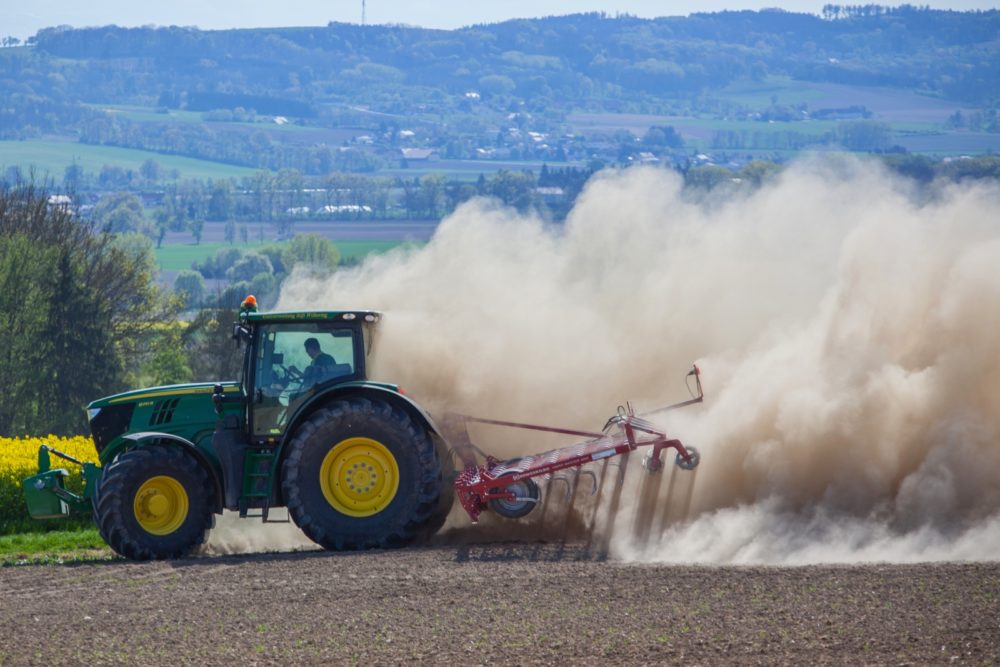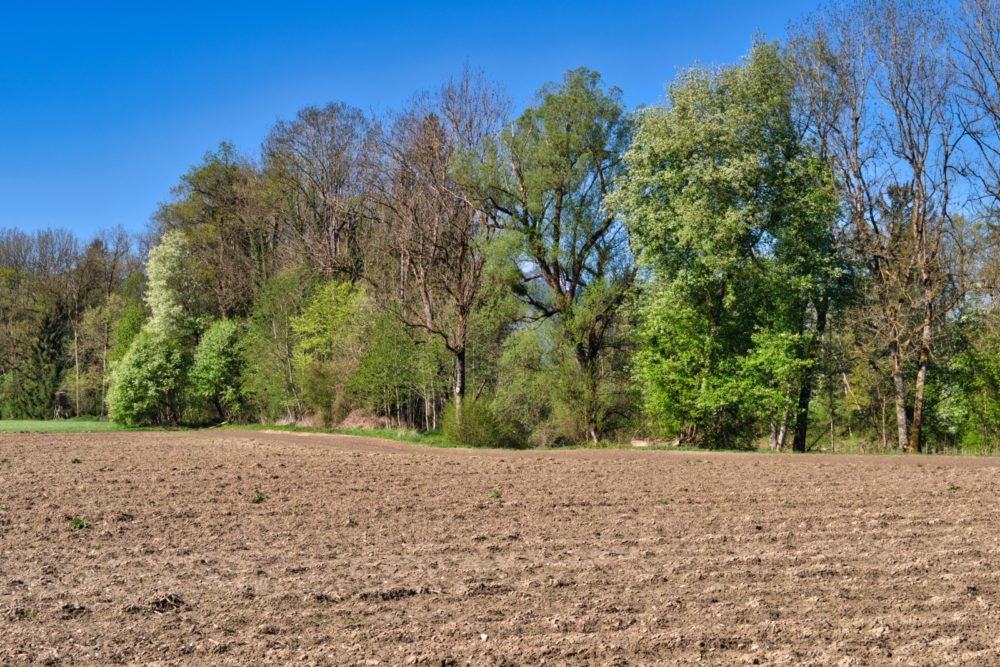Afforestation improves the quality of agricultural land
 The landscape of Central Europe is traditionally divided into agricultural land and forest. The proportion of these parts has changed historically, with the main trend being the reduction of forest area. However, in recent years there has also been afforestation of agricultural land, which has an effect on changing its quality and properties as well as conditions for various organisms. For example, scientists have found that on an afforested agricultural site at the age of 24 years, very high-quality water-stable soils are already being formed.
The landscape of Central Europe is traditionally divided into agricultural land and forest. The proportion of these parts has changed historically, with the main trend being the reduction of forest area. However, in recent years there has also been afforestation of agricultural land, which has an effect on changing its quality and properties as well as conditions for various organisms. For example, scientists have found that on an afforested agricultural site at the age of 24 years, very high-quality water-stable soils are already being formed.
Within the entire ecosystem, the soil plays a significant role in the cycle of substances and the flow of energy. Soil properties are characteristically formed depending on the parent rock, duration and intensity of physical and chemical factors. Soil characteristics also differ regarding farming methods and land use. Soil is an environment for various organisms that create a complex set of interacting components, together with solid particles.
The conversion of land use from forest land to agricultural land leads to a change of its chemical, physical and biological properties. This conversion has already been sufficiently in literature described. Change of use causes soil degradation. Various procedures used to be used in practice to mitigate this adverse phenomenon. An example is a nonplowing system, the cultivation of perennial crops, or the conversion of land to permanent grassland or forest.
 Due to the action of water, some macro aggregates break down into micro aggregates and into primary soil particles. This is an unfavourable phenomenon, as smaller particles are more easily moved in the process of soil erosion and possibly create a less permeable layer on the surface, which leads to a decrease in the infiltration rate.
Due to the action of water, some macro aggregates break down into micro aggregates and into primary soil particles. This is an unfavourable phenomenon, as smaller particles are more easily moved in the process of soil erosion and possibly create a less permeable layer on the surface, which leads to a decrease in the infiltration rate.
Intensive forms of agriculture affect the complex of organic components of the soil. The effect manifests itself as a decrease in WSA (soil structure stability index). When the soil is left undisturbed, WSA increases, allowing both plant roots and edaphone to penetrate the soil profile.
A visible manifestation of the renewal of the forest soil environment, it is the formation of surface organic horizons arising from the fallout and decomposition of above-ground plant biomass.
Afforestation of agricultural land helps to increase both porosity and improvement stability of soil aggregates. In case of soil with an optimal structure, the porosity value can reach up to 70%. On the other hand, the porosity can only be around 30%, in compacted soils. Afforestation of agricultural land also significantly decreases the air temperature above the surface.
 A comparison of historical and contemporary orthophoto images was used to select research sites with forested arable land. Comparable locations near Nové Město nad Metují with the same climatic conditions (precipitation, temperature) were selected, less than 1.5 km apart, at an altitude of around 400 m. The average annual temperature here is 7–8 °C and the annual rainfall 600-750 mm.
A comparison of historical and contemporary orthophoto images was used to select research sites with forested arable land. Comparable locations near Nové Město nad Metují with the same climatic conditions (precipitation, temperature) were selected, less than 1.5 km apart, at an altitude of around 400 m. The average annual temperature here is 7–8 °C and the annual rainfall 600-750 mm.
Soil samples were taken in June 2022 according to the established methodology. During laboratory analyses of the samples, the value of soil structure stability (WSA index) was verified by so-called dry and wet sieving of individual samples. During wet sieving, moistening of soil is simulated, for example during light rain.
Conclusions
At each investigated site, there was compared the representation of water-stable soil aggregates (WSA) in forest and arable land. From the point of view of land use, no bigger differences were evident after dry sieving. As scientists have found, the fraction larger than 2 mm was always the most represented, ranging from 29-82% for all variants tested.
However, a significant change occurred after subsequent wet sieving. For arable soil, fraction larger than 2 mm was almost completely (98–99%) comminuted into smaller fractions.
On the contrary, the largest representation (24–41%) for arable land had a fraction of 0.5–0.25 mm, indicating a worse infiltration into the soil, as a poorly permeable layer is formed when it rains.
 The results of the wet sieving of the forest soil indicate much better soil properties, as the largest fractions (larger than 2 mm and 2–1 mm) are still represented in the sample in the range of 34–69% and the soil can be assumed to have good infiltration and retention capabilities.
The results of the wet sieving of the forest soil indicate much better soil properties, as the largest fractions (larger than 2 mm and 2–1 mm) are still represented in the sample in the range of 34–69% and the soil can be assumed to have good infiltration and retention capabilities.
In the tested forest locations, the influence of the age of the stand on the formation of water-stable soil aggregates was monitored. The results show that the second location (24 years old), which achieved the best values (greater than 2 mm = 52%), already has high-quality aggregation, which is probably influenced by the density of the stand.
In the third tested locality, there is the effect of age (67 years) also clear and the representation of larger fractions can be seen here again. Compared to the second locality, value of this is less (greater than 2 mm = 44%), which is probably due to the fact that the trees are more widely spaced in this third site (less root activity).
At the first location (age of 10 years), aggregates larger than 2 mm there make up only 20%, for the while, but the effect of forest cover on the formation of water-stable soil aggregates there is already observable.
The paper The effect of afforestation of former arable land and its effect on the formation of water-stable aggregates (WSA) / Vliv zalesnění orné půdy a různého věku lesního porostu na tvorbu vodostabilních půdních agregátů (WSA)/ can be downloaded here.
Authors: Radek Klíč, Miroslav Kravka, Czech University of Life Sciences in Prague, Faculty of Environmental Sciences (FZP) /ČZU v Praze, Fakulta životního prostředí/; Ladislav Čepelka, FGMRI (VÚLHM, v. v. i., VS Opočno); e-mail: klicr@fzp.czu.cz
Prepared by: Ing. Jan Řezáč, FGMRI (VÚLHM, v. v. i.), e-mail: rezac@vulhm.cz
Illustrative photos: Examples of agriculturally and forestry intensively used landscape
